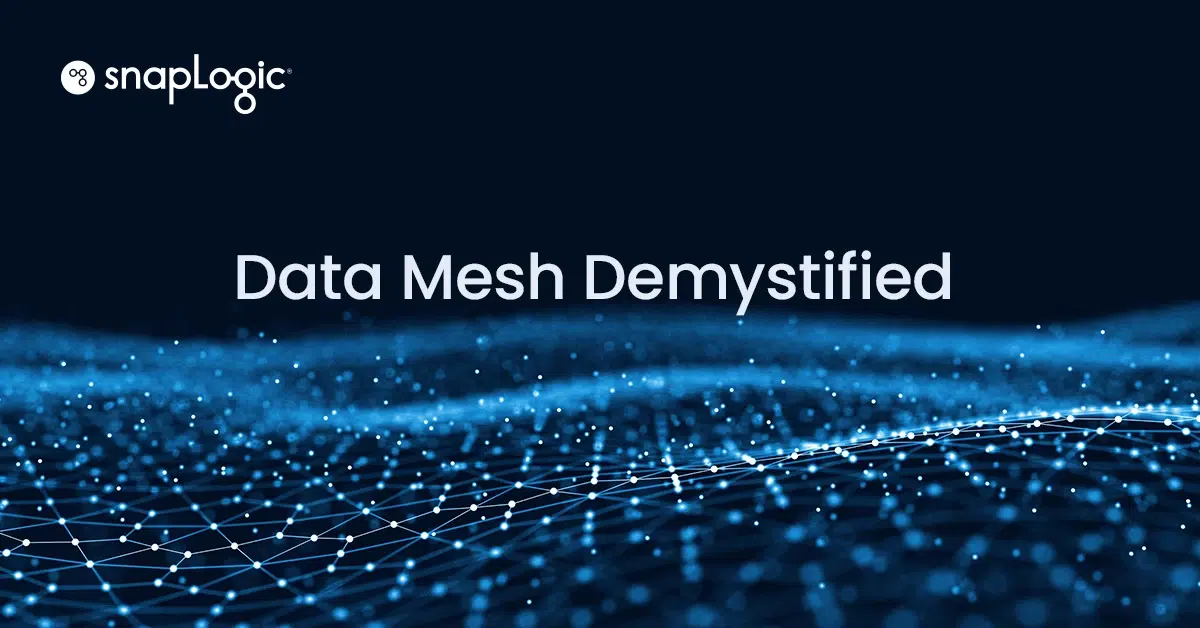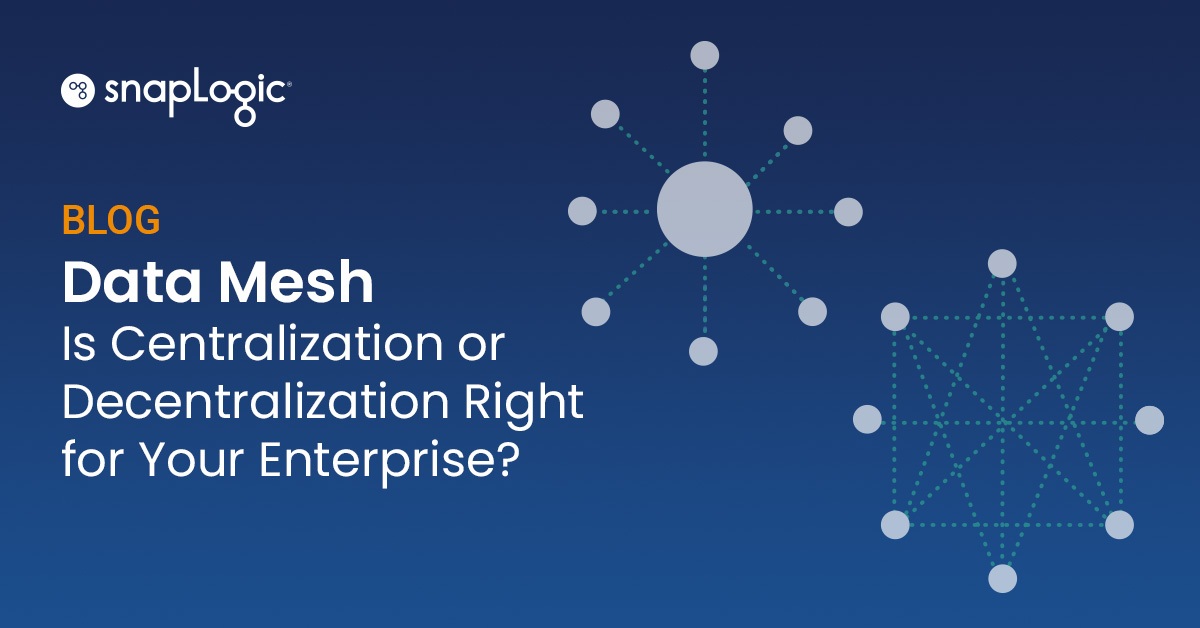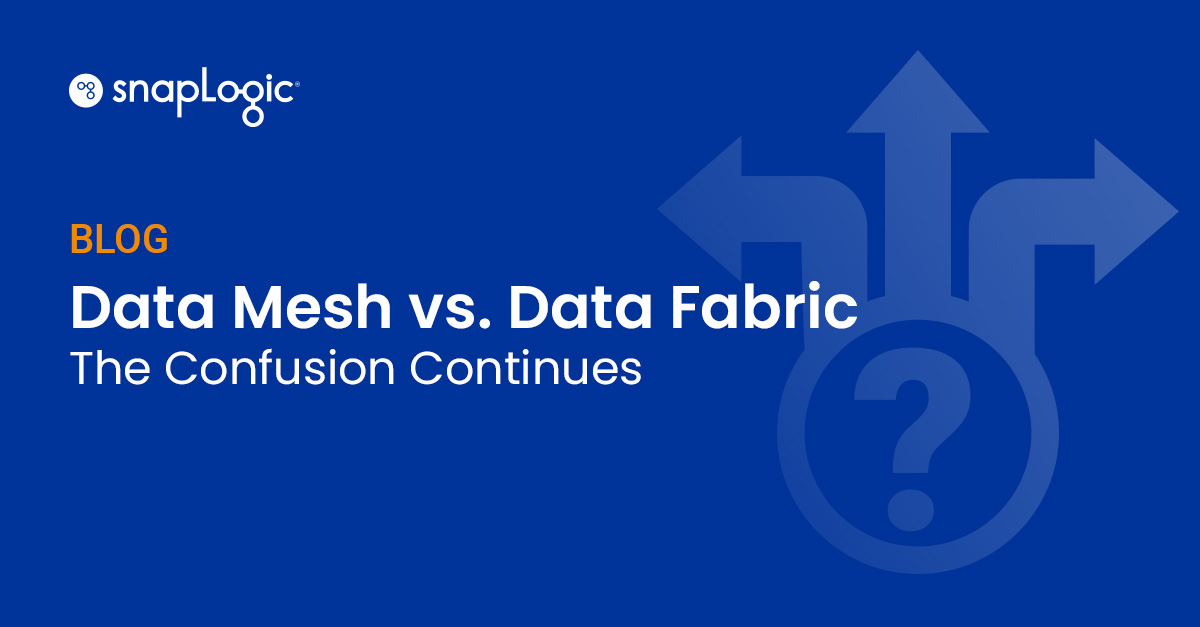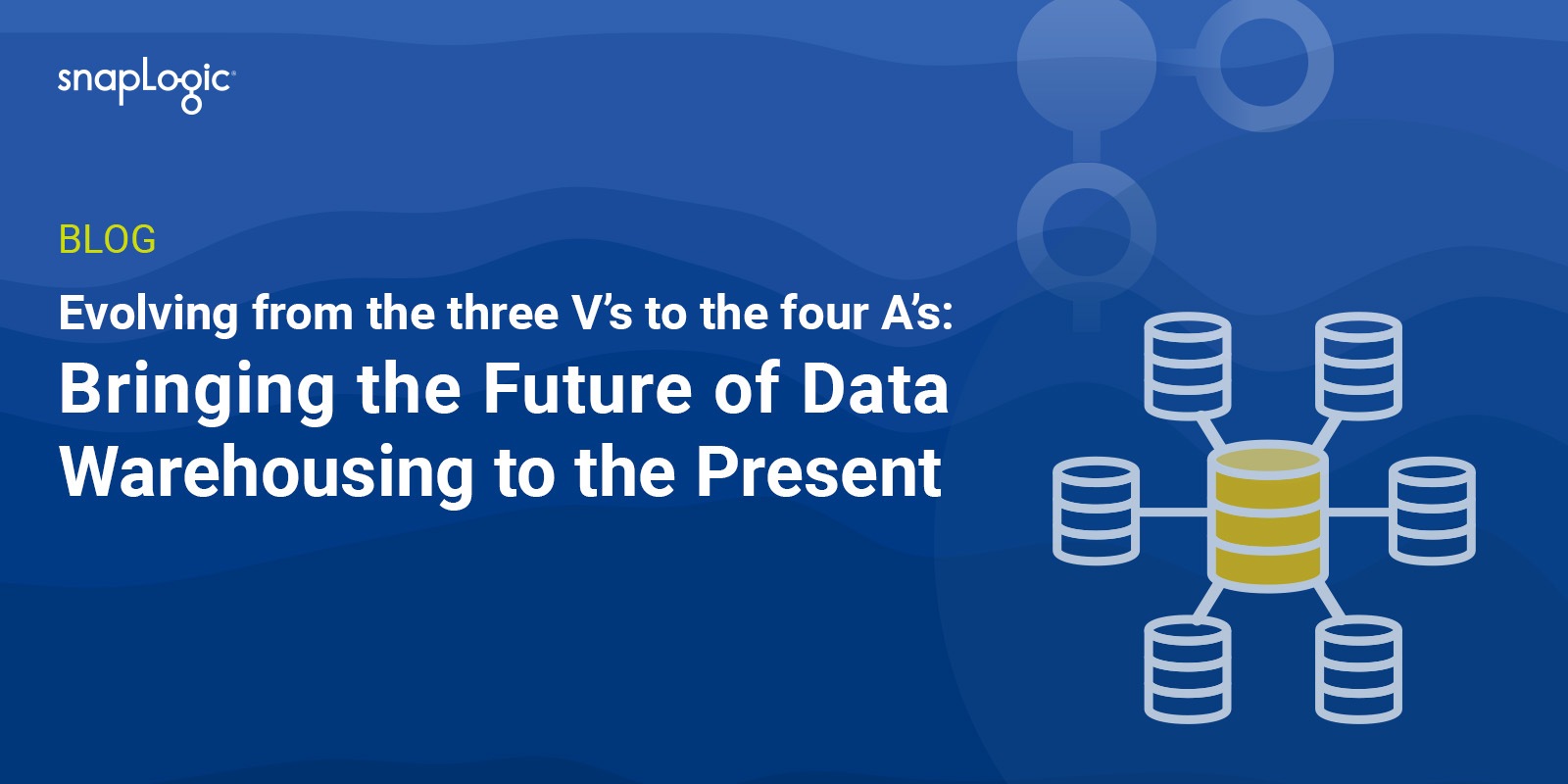What is a data mesh?
We recently held a new webinar on the topic of data mesh.
A data mesh is an enterprise data management framework that defines how to manage business-domain-specific data in a way that allows business domains to own and operate their data. It empowers domain-specific data producers and consumers to collect, store, analyze, and manage data pipelines without the need for an intermediary data-management team.
The concept of data mesh architecture combines data connectivity, artificial intelligence, enterprise application integration, and a set of new, innovative data capabilities present in today’s market. Whether you are a data architect or engineer, or you’re just curious about how to drive business goals with data, understanding the benefits of a data mesh is a valuable asset.
Data mesh can often be perplexing at first, but it can transform how an organization manages and uses data. I’ve laid out the basics of its origins, how data mesh has been impacted by AI, and real-life examples of its applications. Let’s explore.
Theories on data mesh architecture
The theory of data mesh has various interpretations. In summary, the main approaches include:
- Data mesh as defined by Zhamak Dehghani: focuses on domain-owned data products
- Data fabric as per Gartner: focuses on global active metadata
- Data virtualization by other industry experts: focuses on an abstracted semantic layer
They each have their differences, but all these models emphasize the decentralization of data in their design. This highlights the importance of an integration backbone for a data mesh in a distributed data environment.
For a deeper dive, watch the webinar on-demand: “Data Mesh Architecture: From Theory to Implementation”
Data integration and the role of AI
In a data-rich environment, which includes many businesses, integrating data sources is critical and often complex. The potential for AI and machine learning in the data integration space is immense. For example, one recent development presents the capability to auto-discover datasets with AI, saving time and effort.
The interplay of AI and machine learning can improve the efficacy of data and app integration, API integration, and analytics, all contributing significantly to the overall dynamics of a well-architected data mesh.
Real-life applications of data mesh
Common goals with data mesh include creating data products for sharing or commercialization and implementing self-service across the organization. Various real-world applications of SnapLogic’s data mesh platform can provide empowering insights into potential use cases for various industrial sectors, including:
- IT: a large IT consulting firm managing dozens of domains and tens of thousands of users
- Energy: an energy management company with autonomous data-building capabilities
- Healthcare: a leading healthcare provider leveraging the power of metadata for quick data discovery
To realize data mesh’s full potential requires acknowledging and preparing for possible challenges, including organizational changes, resource constraints, and shifting corporate priorities. We recommend managing expectations and aligning them with the industry’s current state to ensure a successful transition to data mesh infrastructure.
Self-service data mesh with SnapLogic
SnapLogic’s approach to data mesh allows for self-service by demonstrating a clear understanding of the diverse needs across business units. By allowing each unit to have its own domains through a multi-tenant infrastructure, they have the autonomy to administer their own governance policies.
Our suite of tools, including SnapGPT with generative AI, callable patterns, and an auto-sync environment for creating data pipelines and data sets, aids users in effortlessly building pipelines and managing APIs, demonstrating the seamless self-service capabilities of the platform.
Stay tuned for more discussions on data mesh as we dig deeper into an advanced understanding of the data science realm.








